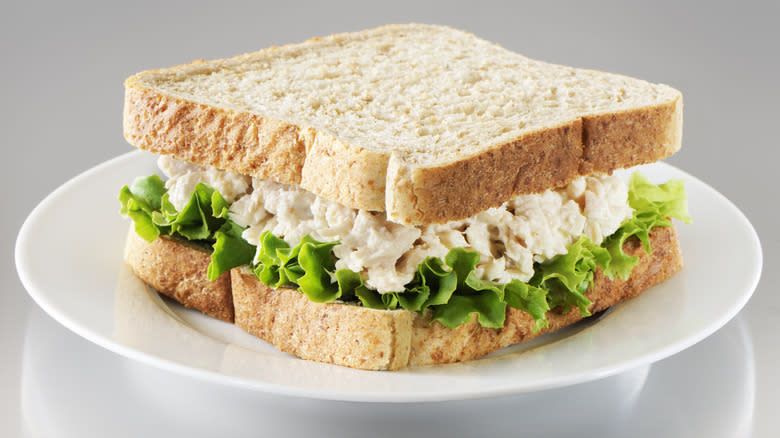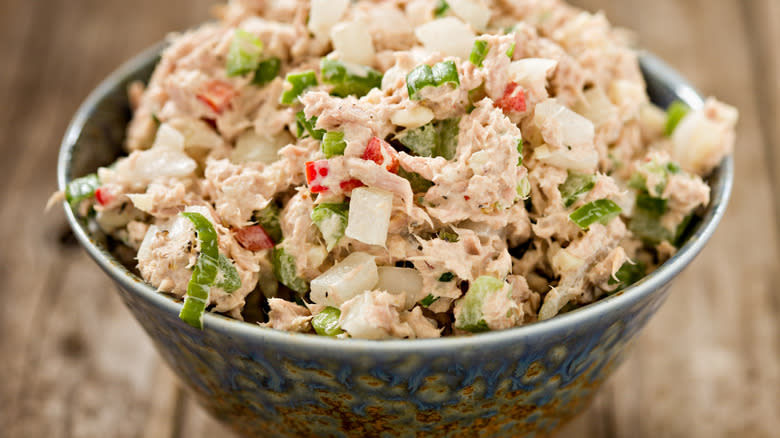Why You Should Think Twice Before Buying Grocery Store Tuna Salad

The modern foodie is a terrifically busy, terrifically hungry individual -- we get it. On your lunch break or after a hectic day running errands, it's easy to swing by the nearest Duane Reade or Erewhon and hit the pre-made food fridge for a container of tuna salad. It's a smart choice. Tuna is a killer low-calorie protein, simultaneously low-fat and high in healthy DHA omega-3 fatty acids, keeping folks fueled as they go about their days. Still, while we're all aboard the Tuna Salad Train, store-bought is not the way to go here. It may be tempting to hit the Whole Foods buffet post-grocery-run, but resist the temptation: It's worth it to make your tuna salad at home.
For starters, it's easy to make elevated tuna salad yourself. You don't have to turn on the stove, wash a bunch of dishes, or wait for anything to finish cooking. It's accessible for beginner home cooks, pescetarian-friendly, and ready to eat as quickly as you can slam the ingredients together. Homemade tuna salad is also wicked simple to customize. You can add sweet pickle relish for tang and crunch, or diced apples for sweetness and bulk. You could swap the regular mayo for umami-forward Kewpie mayo, or raid your own spice cabinet (lemon pepper, dill, and curry powder are our favorites). It's all tailored to suit your unique preferences. (Grocery store tuna salad may be a little quicker, but it can't do that.)
Read more: 15 Different Ways To Cook Fish
Bigger Flavor For Less Money

The second (and arguably most important) benefit of making tuna salad at home is avoiding the grocery store price markup. News flash: It's always been like this, from the beginning of tuna salad. Tuna salad first started cropping up in the kitchens of 19th-century American home cooks as a thrifty way to use up food scraps. Then, as the economy healed during the end of the century, fashionable middle-class women began patronizing department stores, and lunch counters began serving the familiar fish salad to cater to their new audience. As Smithsonian Magazine artfully puts it, "The tuna salad sandwich originated from an impulse to conserve, only to become a symbol of excess." Today, at a Whole Foods in Brooklyn, tuna salad sells for $10.99 per pound.
By contrast, at a Walmart in New York, a can of tuna runs for just $0.96. The Solid White Albacore Tuna from Trader Joe's costs a little more at $1.99 per can, but it's a great product for making flavorful, texturally pleasant tuna salad that'll liven up your lunch break (albacore canned in water is our go-to). Some brands like Target's generic Good & Gather ($1.49 each) carry individual serving-size pouches of tuna slathered in flavorful sauces. Pre-seasoned products like these can make it even easier to whip up a batch of affordable tuna salad that doesn't skimp on taste. Stored in an airtight container in the fridge, homemade tuna salad will keep for three to five days.
Read the original article on Tasting Table.

